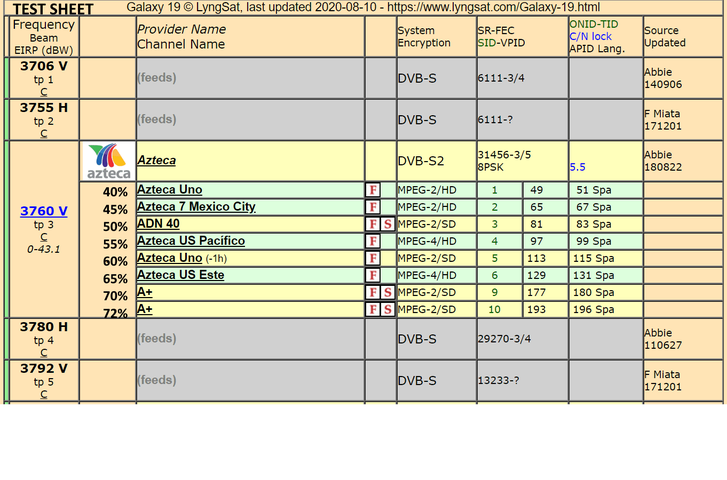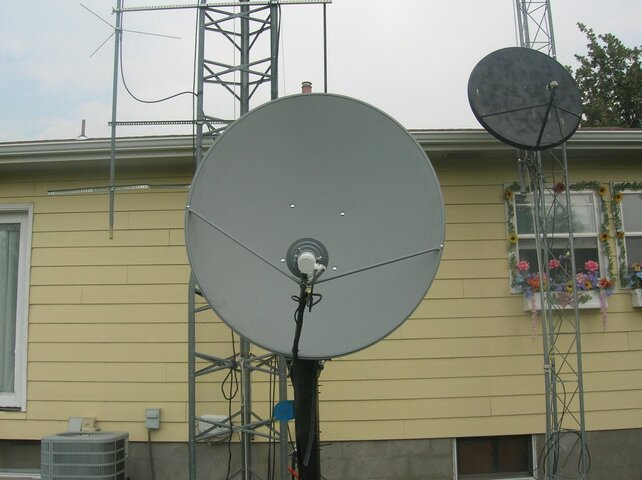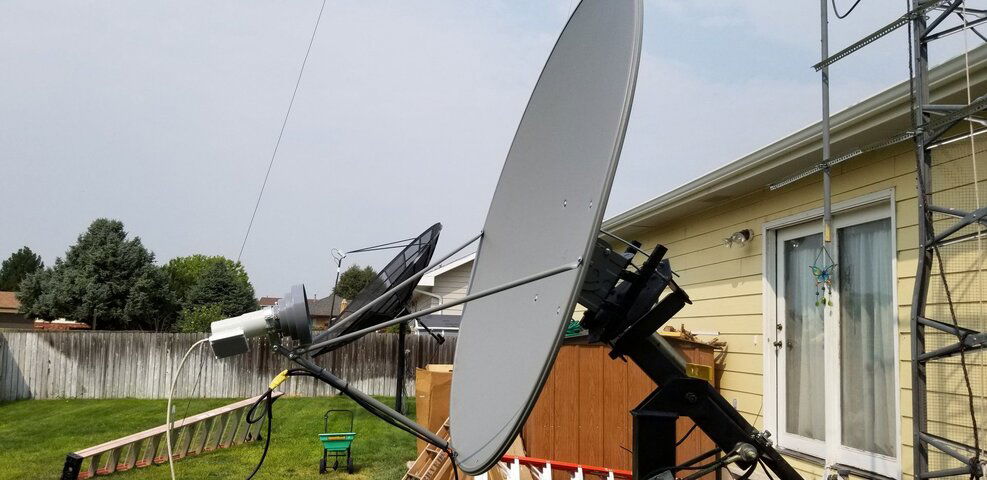So, when measured at the vertical dish face, subtract the offset angle of 27.3 (as per your information), to get the dish face elevation angle of 14.2 degrees (just 14.2 degrees from vertical).
So I guess the dish has to lean forward a little bit more.
Can you walk me through how this is determined? Is there an "offset dish for dummies" book? The info I've come up with doesn't explain things clearly. I need to be spoon fed more. But I'll set it for 14.6 since my true south elevation is suppose to be 41.9 (this is my latitude to 1 decimal place). So, 41.9-27.3=14.6. I don't know how accurate this adjustment needs to be to pull in a C-band signal though. Hopefully, it's close enough.





